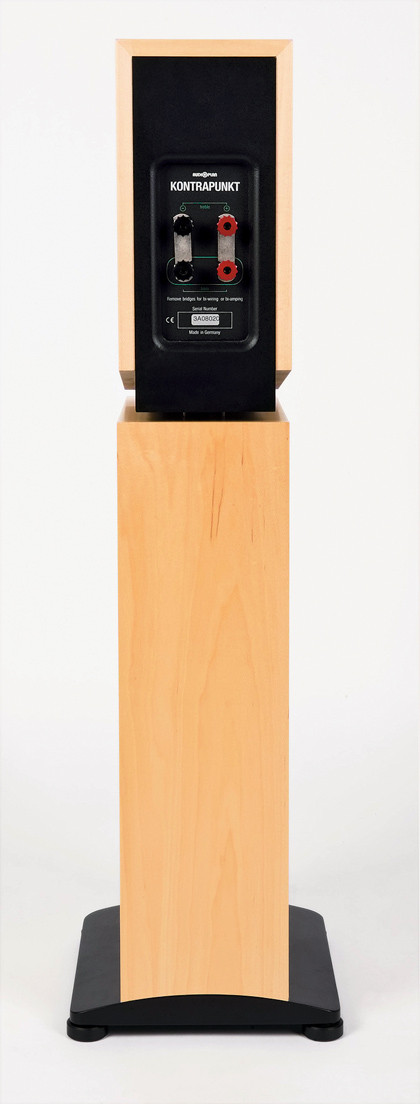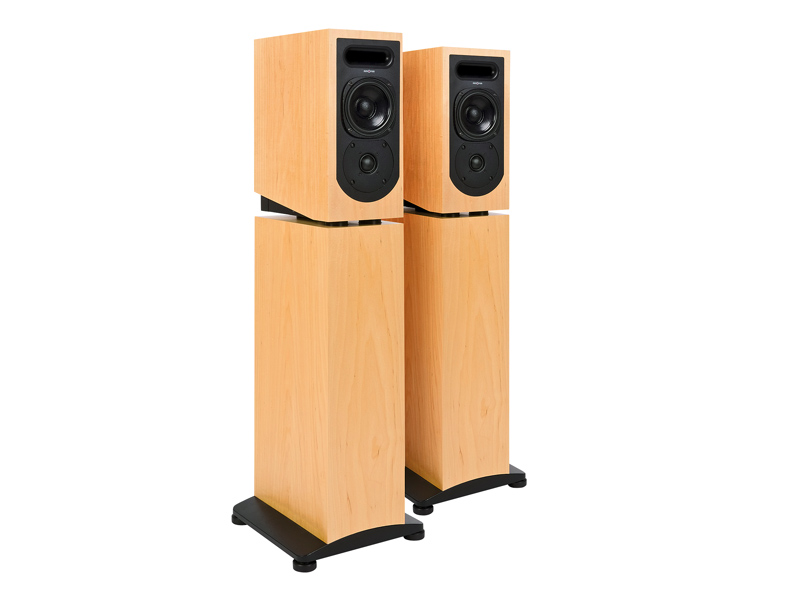TechRadar Verdict
Costly for something so small, but very persuasive nonetheless, thanks to exceptional stereo imaging and mid-through-treble coherence. Bar some mild chestiness, colorations are very well controlled
Pros
- +
Exceptional stereo imaging
- +
Mid and treble coherence
- +
Good control
Cons
- -
Expensive for size
- -
Some mild chestiness
Why you can trust TechRadar
Audioplan is a German operation that has been around for nearly 30 years. While its prime activity has long been the creation of a small, but highly refined range of speakers, it has also played a major role in emphasising the importance that accessories in the broadest sense have in the final performance of a hi-fi system.
A two-way miniature invariably supplied with matching stands, the original Kontrapunkt was launched way back in 1984 and claims to have been: "the first serial production loudspeaker with spikes and sand filling".
That's as may be; the little Kontrapunkt has gone through several distinct stages of evolution, as its IVB suffix clearly shows, for example abandoning spikes in favour of Sicomin AntiSpikes when the first Mk IV model appeared in 1997.
Ten years on, Audioplan introduced this £2,898 per pair Kontrapunkt IVB. It's still a tiny two-way miniature, but an exceptionally solid and refined one.
The speaker itself weighs a surprisingly hefty 9.4 kilograms, but that pales into insignificance when you try to lift the matching pedestal stand, which totals 29 kilograms (including 20 kilograms of sand fill). It's almost as though the pedestal 'raises the floor' to support the speaker proper, although it's apparently possible to adjust the tonality by varying the amount of sand.
It's a very pretty loudspeaker (and pedestal), with a choice of four real-wood veneers – cherry, beech, maple and apricot – or four paint finishes (grey, white and black enamel, and black high gloss). It's also very heavily built, with walls up to 65 millimetres thick.
Heavy duty twin terminal pairs, plus substantial silver-plated links, feed an encapsulated crossover. The small main driver has an 80-millimetre doped paper cone and is mounted above a mechanically decoupled 25-millimetre fabric dome tweeter and below a slot-shaped port.
Sign up for breaking news, reviews, opinion, top tech deals, and more.

The AntiSpike coupling consists of small discs, about three centimetres in diameter and a few millimetres thick, which sit on three similar looking discs recessed into the top surface of the pedestal.
The base of the pedestal has a small plinth which extends the stability footprint and again sits on AntiSpikes – four in this case.
Sound quality
Tiny loudspeakers are bound to lack bass weight and loudness capability, but they also have significant advantages in several areas.
Small enclosures are bound to produce similarly small cabinet coloration, and their wide dispersion promotes good imaging; small main drivers operate higher into the upper midrange without difficulty and integrate better with a tweeter.
And it's the quite wonderful stereo image, precision and focus that really sets this small speaker apart from the herd. The above reasons do indeed contribute, but such advantages can only be as good as the specific implementation.
It's abundantly clear that this model's painstaking long-term development, and its consequent excellent coherence and very low levels of coloration, make a major contribution to its superior imaging.
Although deep bass isn't on the agenda here, and the lower mid sounds a little lean, there's sufficient port-assisted midbass to keep the speaker well clear of walls and thus add air and spaciousness to the imaging.
There's also a touch of chestiness through the lower registers, but the mid and presence voicing and coherence are about as good as it gets and are more than fair compensation.
Follow TechRadar Reviews on Twitter: http://twitter.com/techradarreview
